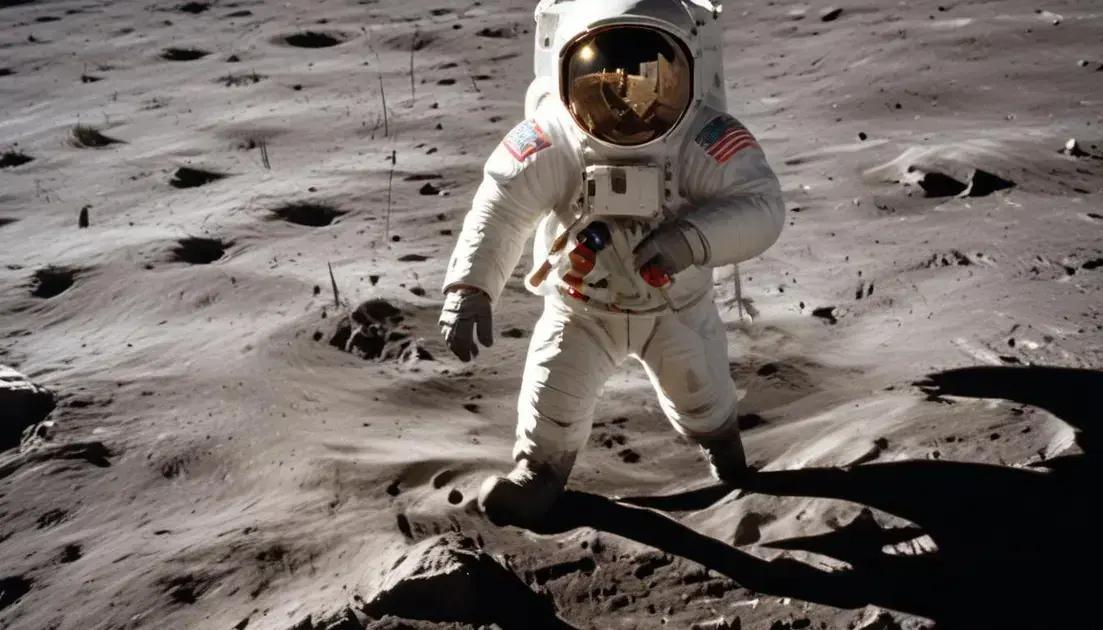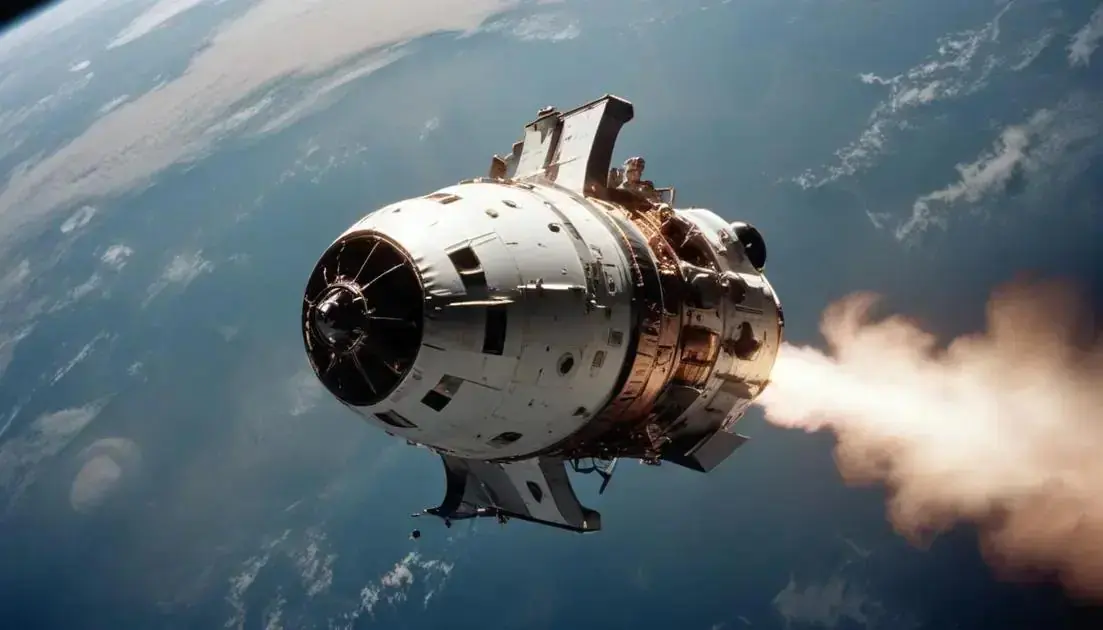
Apollo 11 Mission: How Man Landed on the Moon in 1969
Apollo 11 was a landmark mission in space exploration, marking the first time humans landed on the Moon on July 20, 1969. Led by astronauts Neil Armstrong and Buzz Aldrin, the mission demonstrated human ingenuity and the capabilities of technology. Key challenges included the complexity of the spacecraft, communication delays with Earth, and the demanding conditions of space travel. The legacy of Apollo 11 continues to inspire future generations and foster international collaboration in space science and exploration.
Apollo 11 is more than just a space mission; it’s a testament to human ingenuity and determination. Join us as we relive those moments that changed the world forever.
The Space Race Context
The Space Race was a thrilling competition between the USA and the Soviet Union. It started in the late 1950s and lasted until the early 1970s. Both countries aimed to show their superiority in science and technology.
In 1957, the Soviet Union launched Sputnik, the first artificial satellite. This shocked America. It sparked a sense of urgency to catch up. Schools then began to teach more math and science to prepare a new generation of space explorers.
Next came human spaceflight. In 1961, Yuri Gagarin became the first person to orbit the Earth. This achievement pushed the United States to accelerate its efforts. They wanted to land on the Moon, and fast!
The Apollo program was born out of this fierce competition. It focused on landing astronauts on the Moon. Apollo 11 was the mission that finally achieved this dream in July 1969. Neil Armstrong and Buzz Aldrin walked on the Moon’s surface, marking a significant milestone.
The Space Race wasn’t just about landing on the Moon. It also led to many technological advancements. These advancements changed everyday life. For example, satellite technology emerged from this race, which we still rely on today for communication and weather monitoring.
The legacy of the Space Race inspires curiosity and exploration. It reminds us that when we push boundaries, amazing things can happen. The exploration of space is far from over. We continue to learn and discover new frontiers.
Launch Details
The Apollo 11 launch was a spectacular event. It took place on July 16, 1969, at Kennedy Space Center in Florida. The launch vehicle was the Saturn V rocket, which was the most powerful rocket ever built.
As the countdown began, excitement filled the air. Thousands of spectators gathered to witness history. The Saturn V stood tall, ready for action. It was a towering 363 feet high, about the same as a 36-story building!
At 9:32 AM, the rocket roared to life. Engines ignited, and the rocket lifted off smoothly. It climbed into the sky, leaving behind a trail of smoke and fire. Everyone watched in awe as it soared into space.
The launch proceeded flawlessly. Within about 12 minutes, Apollo 11 reached Earth’s orbit. After that, it performed a crucial stage separation. The command module and lunar module separated from the rocket’s third stage.
After reaching orbit, the spacecraft headed to the Moon. It took about three days for Apollo 11 to travel there. The team was composed of three astronauts: Neil Armstrong, Edwin “Buzz” Aldrin, and Michael Collins. Each played an important role during the mission.
Launch details are not just about the action; they also reflect teamwork. Engineers, scientists, and support staff all worked together. Their hard work paid off, leading the way to a safe and historic lunar landing.
Neil Armstrong’s Historic Step
On July 20, 1969, Neil Armstrong made history as he stepped onto the Moon. This moment was part of the Apollo 11 mission. As he descended the ladder, he faced a new and exciting world.
Armstrong said the famous words, “That’s one small step for [a] man, one giant leap for mankind.” These words truly captured the moment. People all over the world were watching and cheering.
When he stepped on the lunar surface, he felt fine dust under his feet. This Moon dust was different from anything on Earth. Armstrong took careful steps, realizing how special this moment was.
The gravity on the Moon is much less than on Earth. This made walking feel lighter and different. Armstrong and Buzz Aldrin explored the area, collecting rocks and taking pictures. They had only two hours to explore the surface.
During their time on the Moon, they set up scientific instruments. These tools helped scientists learn more about the Moon’s environment. Each small action contributed to our understanding of space.
Neil Armstrong’s step on the Moon inspired millions. It showed that humans could achieve great things. This historic event sparked dreams of future exploration and discoveries beyond our planet.
Mission Challenges
The Apollo 11 mission faced many challenges, but the team worked hard to overcome them. One major issue was the complexity of the spacecraft. The Lunar Module, where astronauts landed, had to operate perfectly.
Communication with Earth was another vital challenge. They had to ensure clear contact with Mission Control. The distance from Earth made signals travel slowly. This delay required astronauts to be patient and precise in their actions.
Here on Earth, the team also dealt with tight deadlines. They had to finish the spacecraft on time. The pressure was immense because everyone wanted America to win the Space Race.
During re-entry to Earth, the module faced intense heat. The speed was very high, creating friction that heated the craft. The heat shield had to work perfectly to protect the astronauts inside.
The astronauts practiced numerous simulations. They prepared for various situations they might encounter. This training was essential to ensure they could handle problems calmly if they arose.
Living in the cramped quarters of the spacecraft was another challenge. The astronauts had to share tight spaces for over eight days. They had limited supplies and had to manage them carefully.
Despite these challenges, the Apollo 11 crew showed great teamwork. Their determination and skill allowed them to achieve the impossible. They proved that humans could explore the unknown and succeed against all odds.
Legacy of Apollo 11
The legacy of Apollo 11 goes beyond landing on the Moon. It inspired generations to dream big. This mission showed what humans can achieve with hard work and determination.
After the mission, interest in space exploration grew. Schools added space science to their curriculum. Young people began dreaming of becoming astronauts and scientists.
Apollo 11 also sparked new technology. Many inventions created for space travel made their way into everyday life. For example, memory foam and some medical devices came from space research.
The mission pushed nations to collaborate. It opened doors for international space programs. Countries now work together on projects like the International Space Station.
Today, the spirit of Apollo 11 remains strong. NASA continues to explore the Moon and Mars. The Artemis program aims to return humans to the Moon and prepare for future missions to Mars.
Neil Armstrong and Buzz Aldrin are remembered as pioneers. They proved that with courage and teamwork, anything is possible. The excitement of exploration continues to inspire new generations.
The legacy of Apollo 11 ignites curiosity. It reminds us that exploring the unknown leads to amazing discoveries. Each step into space pushes the boundaries of human capability.
Conclusion
In conclusion, the legacy of Apollo 11 is more than just a lunar landing. It shows us the power of dreaming big and working together. This mission inspired young people to pursue careers in science and technology.
Apollo 11 also paved the way for new discoveries and technologies. Many inventions that we use today stemmed from research done for this mission. It pushed nations to collaborate in space exploration, making international projects a reality.
As we look to the future, the spirit of Apollo 11 drives us to explore new frontiers. NASA and other space agencies continue to inspire us by aiming for Mars and beyond. The achievements of Neil Armstrong and his crew remind us that with courage and teamwork, we can achieve the impossible.
Ultimately, the story of Apollo 11 teaches us that every step into the unknown opens up a world of possibilities. Together, let’s keep the dream of exploration alive and continue to reach for the stars.


